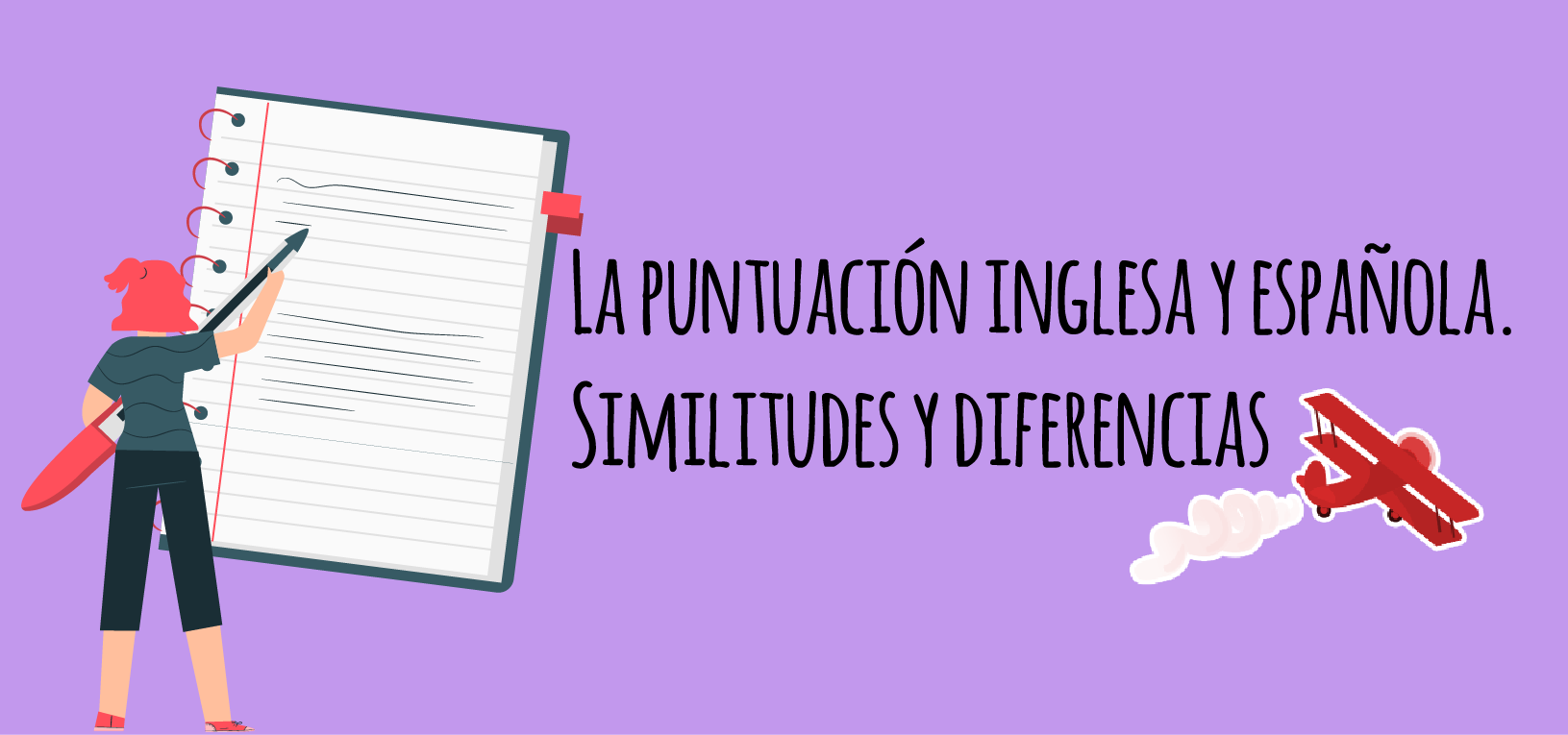The English and Spanish punctuation. Similarities and differences

The use of punctuation marks has to some extent rules that are the product of the editorial traditions of each language and culture, although there is always the possibility of introducing the editor’s preferences. Punctuation structures the text makes it easier to understand, dispel doubts, and also marks pauses for oral reading.
From the perspective of translation, writing the target text also requires knowing how to rate it according to the rules of the target language. Therefore, we suggest you review these conventions in English and Spanish , to check how they are similar and how they differ.
To begin with, the protagonists
| Full stop | . | Punto |
| Period | . | Punto (American English) |
| Ellipses | … | Puntos suspensivos |
| Colon | : | Dos puntos |
| Semicolon | ; | Punto y coma |
| Comma | , | Coma |
| Question mark | ? | Signo de interrogación |
| Exclamation mark | ! | Signo de exclamación |
| Dash | – | Guión largo |
| Underscore | _ | Guión bajo |
| Quotation marks | « » | Comillas |
| Parenthesis | ( ) | Paréntesis |
| Brackets | [ ] | Corchetes |
| Braces / curly brackets | { } | Corchetes |
| Asterisk | * | Asterisco |
Obviously, if we want to study their similarities and also their differences in a detailed way we have to take the English punctuation as a reference.
Full stop
In the same way as in Spanish, final sentence mark: I went to Paris last week. (Fui a París la semana pasada) and it is not placed at the end of an exclamatory or interrogative sentence . It is also used after an abbreviated word (Jackson and Co.) but not if the last letter of the abbreviation is the same as in the full version: Ltd = limited (SA); Mr = mister (Mr.).
However, in charts (especially in British English), it is very common for the point to be completely omitted (USA). And it is never used in abbreviations that are pronounced as words: NATO (NATO).
Ellipses
The three dots go to the end of a word and mean that what you want to say continues on the next line or it is not finished, it is suspended. Exactly the same as in Spanish.
Colon
The main use of a colon is in listing a list. For example: We saw all of Paris’s attractions: the Eiffel tower, the Champs Elysés, the Louvre. They are also used before an explanation : We can’t stay here any longer: the money has run out. And finally, they introduce a quote , something someone has said: In the words of Marco Polo: ‘The man who travels alone travels furthest.’
Be careful though , don’t use the colon in an English letter after the heading as in a Spanish letter. In English the comma is put, which is something that is beginning to be used in our language as well.
Semicolon
The semicolon is used to separate two clauses , two ideas, as if they were two different sentences; however, the second idea refers to, or qualifies, the previous idea: Some people work best at night; others prefer working in the morning. / It’s a good plan; let’s hope it works out. (Some people work better at night; others prefer to work in the morning. / It’s a good plan; let’s hope it works.)
Additionally, the semicolon is also used to separate items in a list within a sentence ; but these elements are usually small phrases and not single words: We’ve got a lot to do today: take the car to the garage; clean the house; take the dog for a walk and loads of other things. (Tenemos mucho que hacer hoy: llevar el coche al garaje; limpiar la casa; llevar al perro a pasear y muchas otras cosas).
Comma
It always appears after words like ‘however’ (sin embargo) and ‘so’ (así que), especially when they are placed at the beginning of the sentence, although they can also appear at the end and in the middle of a sentence: We ran back to the road; the car had gone, however. We didn’t, therefore, have any other option. (Corrimos de regreso a la carretera; sin embargo, el coche se había ido. Por lo tanto, no teníamos otra opción).
Commas are also used within a sentence to avoid the need to write many small sentences; and they turn a long sentence into something more understandable and stylistically more attractive. In this sense it coincides with Spanish.
Instead of repeating “and” between a series of elements in a sentence, we use commas with the exception of the last two elements that are divided by “and” : In the park there were trees, bushes, flowers and a lovely statue. However, in American English they also separate the penultimate element of the conjunction that precedes the last with a comma: We bought apples, pears, bananas, and oranges. But this in Spanish would be a mistake.
In any case, in English “and” is used if there are two elements that belong to the same group of qualities; ex. colors: Blue and white flowers. (flores azules y blancas); but: A dirty, old man. (Un hombre sucio y viejo.)
Finally, the comma is essential to avoid an ambiguous meaning . Let’s take this phrase as an example: Charles, Prince of England, took a plane to New York. (Carlos, Príncipe de Inglaterra, cogió el avión para Nueva York.) It is understood here that we are talking about Prince Charles. But here: Charles Prince of England took a plane to New York. (Carlos Príncipe de Inglaterra cogió un avión para Nueva York); we may be talking about a certain Prince Charles.



